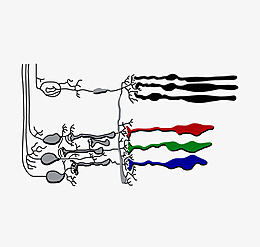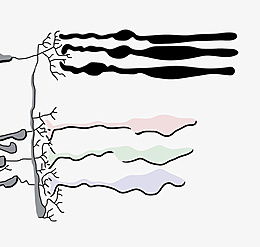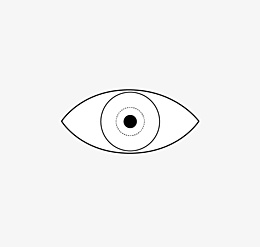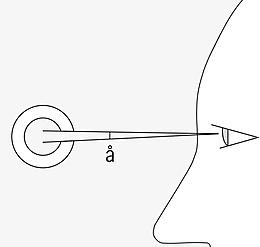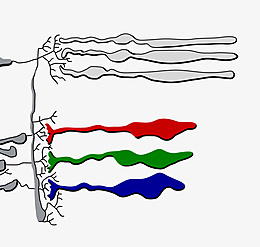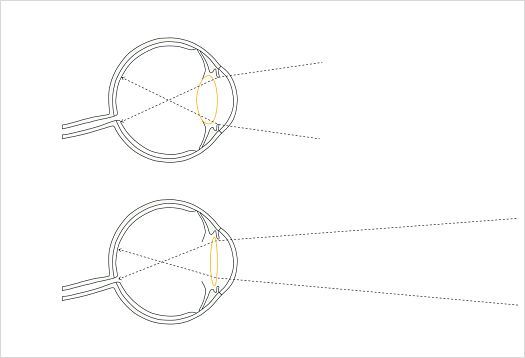
Accommodation is the ability of the eye to focus visual acuity on objects at different distances. This consists of an adjustment of the visual organ by deforming the lens of the eye.
In near vision accommodation, the lens is strongly curved. The sphere-like shape has a higher refractive power. With distant vision accommodation the lens is much flatter, thus reducing the refraction of light. The area where the object is imaged is called the fovea centralis. We only see sharply what is projected onto it. The concentration of cone receptors is highest in the fovea, so daytime vision is equivalent to seeing sharply.

